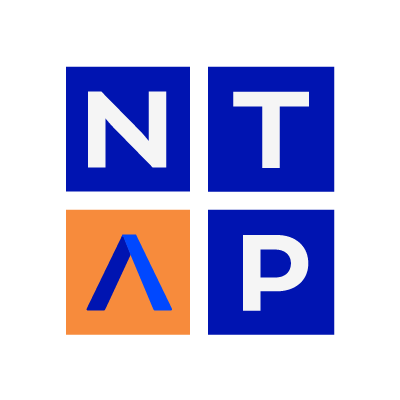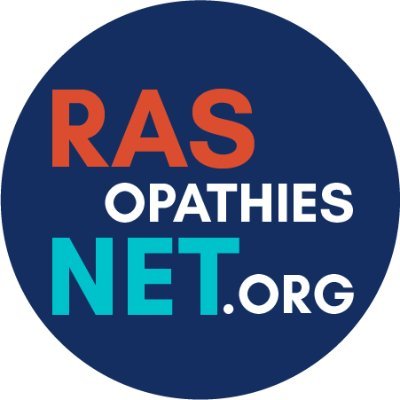
Tamar Green
@TamarGreenLab
Followers
163
Following
102
Media
49
Statuses
144
Assistant Professor, Stanford University. Neuroscientist, excited about technology, the human brain, and genetics. Care about child mental health.
CA
Joined August 2019
🔗Check out the full paper here to dive deeper into these findings: https://t.co/i4yMgjipdU
#Research #RasMAPK #Neuroscience #NoonanSyndrome #NF1 #Neurodevelopment #WhiteMatter Thank you @ntapresearch for funding this work.
academic.oup.com
Using diffusion neuroimaging, Siqueiros-Sanchez et al. show that pathogenic variants in the Ras–mitogen-activated protein kinase pathway are associated wit
0
0
3
Our findings highlight that the Ras-MAPK pathway plays a key role in white-matter development in children, influencing connectivity & social communication. (7/7)
1
0
1
Our findings highlight that the Ras-MAPK pathway plays a keyrole in white-matter development in children, influencing connectivity & social communication. (7/7)
1
0
0
Overlap between NS & NF1 emerged in radial & mean diffusivity, suggesting shared effects on white-matter integrity.
1
0
0
Key findings: Noonan syndrome and Neurofibromatosis type-1 (NF1) show distinct spatial patterns and magnitudes of impact on white matter tracts, as seen in fractional anisotropy and axial diffusivity. 4/7
1
0
0
🧠 Noonan syndrome (NS) & Neurofibromatosis type-1 (NF1) exhibited distinct impacts on white-matter microstructure. Using fractional anisotropy (FA) & axial diffusivity (AD), we observed differences in intra- & inter-hemispheric tracts. (3/7)
1
1
2
We used diffusion neuroimaging to uncover how pathogenic variants in the Ras-MAPK pathway affect brain development, particularly white-matter structural connectivity. Here’s what we found 👇(2/7)
1
0
1
🧵 Excited to Share Dr. Monica Siqueiros-Sanchez's latest paper on the impact of pathogenic variants in the Ras–mitogen-activated protein kinase (MAPK) pathway on white matter tracts in the human brain. (1/7)
1
1
1
NTAP is #HIRING! If you are a recent grad or have Physician Asst. / Nurse Practitioner entry-level experience, apply to this position on our #NF team that sees patients in the clinic and trials. Physician Asst: https://t.co/XefQ1eoLXv Nurse Practitioner: https://t.co/4bXOzN6ML8
0
4
6
I had the honor and pleasure of sharing my thoughts on the research and care for children with #ADHD, #Autisem and #RASopathies, specificaly #NF1 and #Noonan Syndrome. @ChildrensTumor; @ntapresearch; @StanfordMed
Listen to the latest episode of What Makes Up Your Mind to learn about the promising work of @TamarGreenLab
0
3
11
Great talk! Just at the QnA, a child pulled the fire alarm 😂 So reach out if you have questions for Dr Serur or @BridgelabU btw: it was a false alarm
If you're at the Noonan Syndrome Foundation Conference in Orlando, join BRIDGE Lab's Dr. Yaffa Serur's session on the “Behavioral and brain phenotype of children with Noonan Syndrome" tomorrow.
0
2
4
Speaking today the #GNC24 at beautiful Porto was such a pleasure. I enjoyed sharing our #geneticfirst work on #RASopathies and hearing about the great work at #Payne lab. @RASopathiesnet @BridgelabU @ChildrensTumor @ntapresearch
0
1
8
6/6 Full paper is here https://t.co/uzf8iHArCy. A very special thanks to the children and families who participated and the members of @ntapresearch
@NICHD_NIH
@NoonanSyndrome1
@StanfordMed
@StanfordPSY
@RASopathiesnet
0
0
2
5/6 When looking at the syndrome level, #Noonansyndrome and #Neurofibromatosistype1 have a converging effect on surface area and cortical thickness but a diverging effect on subcortical volumes.
1
2
2
4/6 Additionally, we found that #Noonansyndrome had overall decreased subcortical volumes, whereas #neurofibromatosistype1 had increased subcortical volumes.
1
0
0
3/6 Compared to typically developing children, children with RASopathies result in thinner cortices in the precentral gyrus.
1
0
0
Our vertex-based analysis found that children with RASopathies display several alterations in surface area across the cortex compared to typically developing children. Both #Noonansyndrome and #Neurofibromatosistype1 had decreased surface area in the occipital regions.
1
0
0
1/6 #ChloeMcGhee latest research on neuroanatomical variation in children with RASopathies, specifically, Noonan Syndrome and Neurofibromatosis type 1 was published today in BP:CNNI @BiologicalPsyc1, a 🧵😍
1
3
6


